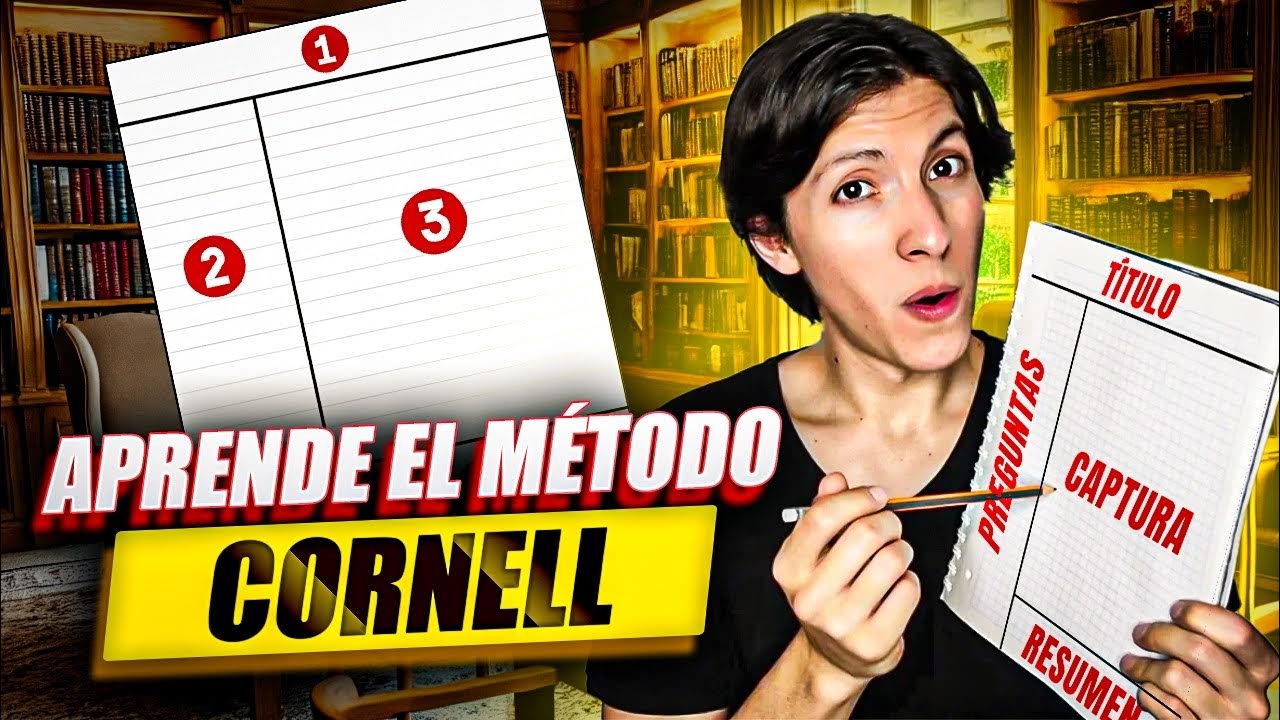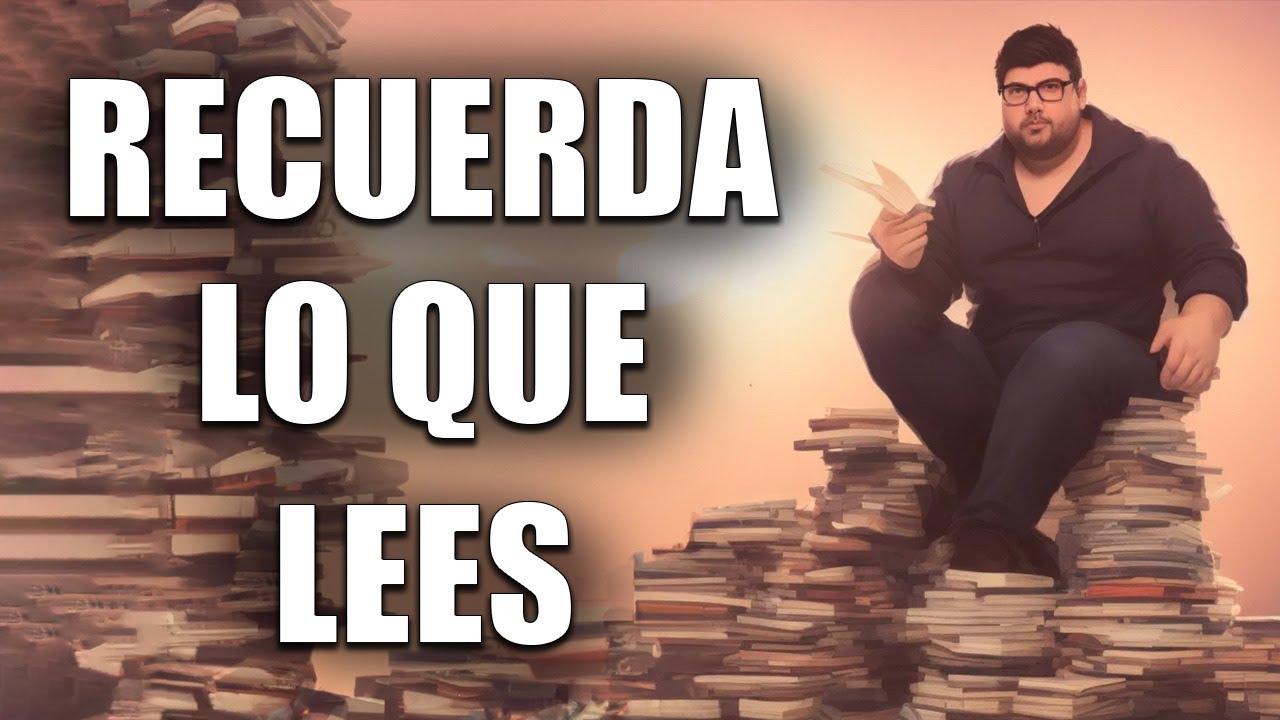My simple note-taking setup | Zettelkasten in Obsidian | Step-by-step guide
Summary
TLDREl video ofrece una visión detallada del sistema de notas personalizado de Obsidian, utilizado por el narrador, que consiste en cuatro carpetas principales y dos etiquetas principales. Se destaca la importancia de mantener la simplicidad en la organización de notas, evitando la complejidad excesiva que puede distraernos de la esencia: absorber ideas, anotarlas y encontrar conexiones. Se describe el proceso de configuración desde cero, incluyendo la creación de carpetas, la selección de temas y plugins, y la utilización de plantillas para agilizar la creación de notas. Además, se discute cómo las notas se vinculan entre sí, formando una red de conocimientos que se organiza de manera orgánica a través de 'mapas de contenido'. El narrador comparte su experiencia y recomendaciones para evitar la procrastinación y mantener el enfoque en la captura de ideas, adaptando el sistema a las necesidades personales.
Takeaways
- 📝 **Simplicidad es clave**: Aunque existen muchas opciones para tomar notas, lo importante es encontrar un sistema simple que funcione para ti.
- 🔍 **Obsidian como herramienta**: Se utiliza Obsidian con 25 plugins y scripts personalizados en Python y CSS para organizar y tomar notas.
- 🏷️ **Uso de etiquetas**: Utiliza 253 diferentes etiquetas con subtítulos para organizar el contenido en diferentes niveles.
- 📁 **Organización de archivos**: Crea cuatro carpetas principales: Zettelcast, Reference Notes, Files y Templates.
- 🗂️ **Estructura de vault en Obsidian**: Cada nodo es un documento Markdown y se organizan en una estructura de carpetas anidadas.
- 🔗 **Enlaces entre notas**: Los enlaces son fundamentales en el sistema de Zettelkasten y permiten la conexión de ideas.
- 📌 **Uso de plantillas**: Las plantillas en Obsidian ayudan a ahorrar tiempo y mantener una estructura coherente en las notas.
- 📈 **Evolución del sistema**: El sistema debe ser capaz de evolucionar con el tiempo, adaptándose a las necesidades personales.
- 🎨 **Personalización**: La personalización del aspecto de Obsidian y la selección de plugins puede mejorar la experiencia de usuario, pero no debe interferir con la toma de notas.
- 📚 **Referencias y fuentes**: Es importante registrar la fuente de las ideas para futuras referencias y posibles citations.
- 🌐 **Visualización de la red**: La vista gráfica en Obsidian muestra cómo las notas se relacionan y ayuda a identificar temas recurrentes.
- 📈 **Mapas de contenido (Mocks)**: Se crean cuando un tema se repite y se convierte en un centro de múltiples ideas atómicas.
Q & A
¿Qué es Zettelkasten y cómo se relaciona con la toma de notas?
-Zettelkasten es un sistema de gestión de conocimientos desarrollado por Niklas Luhmann que se basa en la creación de notas individuales, llamadas 'zettel', que se interconectan para formar una red de ideas. Este método se utiliza para la organización y el análisis de la información, y es especialmente útil para la toma de notas y la estructuración del pensamiento crítico.
¿Cuáles son algunas de las dudas comunes que surgen al principio sobre Zettelkasten?
-Algunas de las dudas comunes incluyen qué escribir, qué aplicación utilizar, cómo etiquetar y estructurar las notas, y cómo conectar las ideas entre sí. Estas inquietudes suelen surgir debido a la variedad de sistemas y métodos que se pueden encontrar en línea, muchos de los cuales entran en contradicción entre sí.
¿Por qué la complejidad de un sistema de Zettelkasten no aumenta sus beneficios?
-La complejidad de un sistema de Zettelkasten a menudo distrae al usuario de lo que realmente importa: absorber ideas, escribirlas y encontrar conexiones entre ellas. La complejidad puede llevar a una sobrecarga cognitiva y a una pérdida de enfoque en la tarea principal de la toma de notas y organización del conocimiento.
¿Qué es Obsidian y cómo se relaciona con Zettelkasten?
-Obsidian es una aplicación de software que permite la creación y gestión de notas en formato de archivo de texto. Se relaciona con Zettelkasten porque proporciona una plataforma para la creación de notas individuales interconectadas, facilitando así la implementación del método Zettelkasten en un entorno digital.
¿Cómo se organizan las notas en Obsidian?
-En Obsidian, las notas se organizan en una estructura de carpetas anidadas dentro de un 'vault', que es un espacio donde residen todos los 'nodos' o notas. Estas notas se pueden enlazar entre sí, creando una red de información. Obsidian también permite la creación de 'tags' y la visualización de la relación entre las notas a través de la vista de grafo.
¿Qué son los 'maps of content' en el contexto de Zettelkasten en Obsidian?
-Los 'maps of content', o 'MOCs', son notas que sirven como centros de clústeres de ideas en el sistema de Zettelkasten. Estos son puntos centrales que emergen en la red de notas y que representan temas o conceptos recurrentes. Se crean cuando un número suficiente de notas 'atomic ideas' se vinculan a un mismo 'tag' o concepto.
¿Cómo se utilizan las plantillas en Obsidian para facilitar la creación de notas?
-Las plantillas en Obsidian son una forma de ahorrar tiempo y esfuerzo al crear nuevas notas. Permiten predefinir el contenido de una nota, incluyendo el título, la fecha, las referencias y otros elementos. Cuando se aplica una plantilla, su contenido se pega en la ubicación actual del cursor, lo que facilita la creación de notas consistentes y estructuradas.
¿Qué son los 'plugins' en Obsidian y cómo afectan la funcionalidad del sistema de Zettelkasten?
-Los 'plugins' en Obsidian son extensiones que añaden funcionalidades adicionales a la aplicación. Algunos plugins son esenciales para la implementación del sistema de Zettelkasten, como el plugin de 'Templates' que permite la creación y aplicación de plantillas, o el plugin de 'Tag Pane' que muestra todos los tags existentes en un panel fácil de usar. Sin embargo, es importante no abrumarse con la personalización de plugins, ya que esto puede distraer de la tarea principal de tomar y conectar notas.
¿Cómo se abordan las referencias en el sistema de Zettelkasten en Obsidian?
-Las referencias en el sistema de Zettelkasten en Obsidian se utilizan para hacer un seguimiento de la fuente de una idea. Se anotan en las notas de manera que permitan volver a la fuente original si es necesario. Esto puede incluir enlaces a videos de YouTube con marcas de tiempo, títulos y autores de libros, entre otros. Las referencias ayudan a mantener la integridad y el rastreabilidad de la información.
¿Por qué es importante la conexión entre notas en el sistema de Zettelkasten?
-La conexión entre notas es fundamental en el sistema de Zettelkasten porque permite la creación de una red de ideas interconectadas. Esto facilita la visualización de relaciones y la generación de nuevas ideas a partir de la combinación de conceptos existentes. Las conexiones entre notas son el pilar central del sistema y permiten que el conocimiento se organice de manera no lineal y se desarrolle de forma orgánica.
¿Cómo se aborda el tema de la evolución y personalización del sistema de Zettelkasten en Obsidian?
-El sistema de Zettelkasten en Obsidian es altamente personalizable y debe evolucionar con el tiempo. Como el usuario acumula más conocimientos y se da cuenta de las estructuras que emergen de sus notas, puede ajustar y adaptar el sistema para satisfacer sus necesidades personales. Esto puede incluir la creación de nuevas etiquetas, la reorganización de notas y la introducción de nuevas plantillas o plugins según sea necesario.
Outlines

Esta sección está disponible solo para usuarios con suscripción. Por favor, mejora tu plan para acceder a esta parte.
Mejorar ahoraMindmap

Esta sección está disponible solo para usuarios con suscripción. Por favor, mejora tu plan para acceder a esta parte.
Mejorar ahoraKeywords

Esta sección está disponible solo para usuarios con suscripción. Por favor, mejora tu plan para acceder a esta parte.
Mejorar ahoraHighlights

Esta sección está disponible solo para usuarios con suscripción. Por favor, mejora tu plan para acceder a esta parte.
Mejorar ahoraTranscripts

Esta sección está disponible solo para usuarios con suscripción. Por favor, mejora tu plan para acceder a esta parte.
Mejorar ahoraVer Más Videos Relacionados

Watch This to Finally Understand The Zettelkasten Method in Obsidian

How I Use Maps Of Content (MOCs) // EP 5 Mastering Obsidian

Obsidian for Beginners: 6 Keys to Markdown (2/6) — How to Use the Obsidian App for Notes

✏️ Cómo Tomar Apuntes con el MÉTODO CORNELL (Muy fácil en 5 Pasos) | Métodos de Estudio

📄 Tomar Notas de esta forma me ha Cambiado la Vida | Zettelkasten con Notion #zettelkasten

Los LÓBULOS CEREBRALES, sus funciones, ubicación y características🧠

📑 Mi sistema para tomar notas en Obsidian
5.0 / 5 (0 votes)